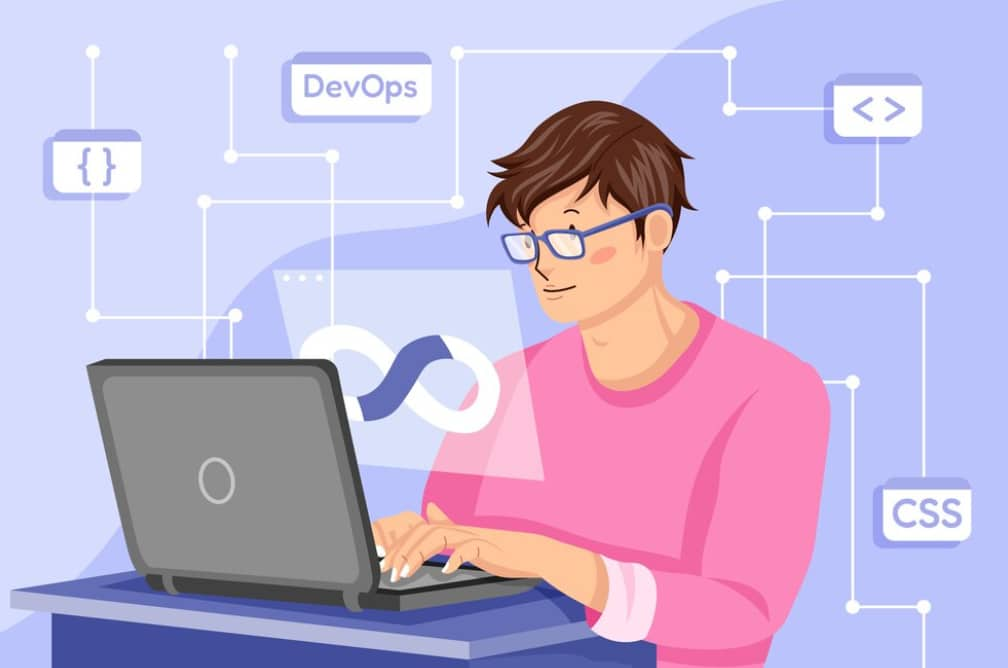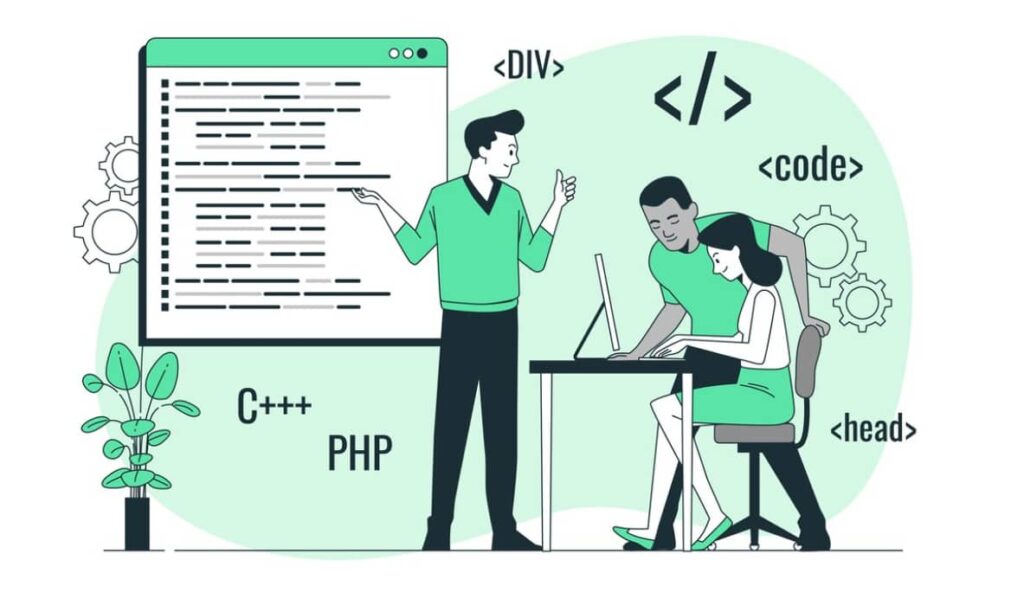Node.js has garnered significant attention from developers due to its capacity to construct scalable and efficient applications. Serving as a robust runtime environment, it enables developers to utilize JavaScript on the server side. Whether you’re a programming novice or aiming to broaden your expertise, you may be pondering: “Is Node.js easy to learn?” In this article, we delve into Node.js’ learning curve and furnish you with a comprehensive roadmap for mastering Node.js from the ground up.
An Overview of Node.js: Understanding its Basics
Before delving into the learning process, it’s crucial to have a clear understanding of what Node.js entails. Essentially, Node.js serves as an open-source, cross-platform runtime environment that allows JavaScript code execution outside the realm of web browsers. It relies on Google’s V8 JavaScript engine to enable server-side execution, empowering developers to create fast and scalable network applications.
The primary objective behind Node.js is to facilitate the development of highly efficient, event-driven applications capable of handling numerous concurrent connections. It achieves this through the utilization of an asynchronous, non-blocking I/O model. This characteristic makes Node.js particularly suitable for building real-time applications such as chat platforms, streaming services, and collaborative tools. With a solid grasp of these fundamentals, we can proceed to explore the learning curve of Node.js and provide a step-by-step guide to mastering this technology.
How Approachable is Learning Node.js?
The journey to mastering any programming language or framework is shaped by a myriad of factors, such as one’s existing expertise, exposure to related technologies like JavaScript, and comprehension of backend development principles. For individuals already proficient in JavaScript, delving into Node.js might seem like a natural and less daunting progression. Nonetheless, Node.js remains accessible to novices, provided they utilize appropriate learning materials and methodologies.
Here are several aspects that contribute to Node.js’s reputation for being comparatively manageable for learners:
- JavaScript Underpinnings: For those with JavaScript experience, Node.js extends the utility of JavaScript to server-side development, allowing for the application of familiar concepts and syntax. This continuity significantly reduces the learning curve by sidestepping the necessity to acclimate to an entirely different programming language or development paradigm;
- Vibrant Support Network: The Node.js ecosystem is bolstered by a dynamic and enthusiastic community. A wealth of resources, ranging from tutorials and comprehensive documentation to online courses and discussion forums, stands ready to support learners. This wealth of knowledge and support facilitates a smoother learning experience;
- Immediate Feedback Mechanism: Node.js is designed to foster a rapid feedback loop, enabling developers to instantly observe the impact of their code modifications. This immediate feedback is advantageous, eliminating the delays traditionally associated with compilation and deployment processes and promoting a more agile development approach;
- Extensive Library Ecosystem with NPM: NPM, Node.js’s native package manager, grants access to an extensive array of libraries and modules. This resource simplifies the integration of external functionalities into projects, obviating the need to develop common features from scratch.
Node.js’s learning curve is moderated by its use of JavaScript, the supportive and resource-rich community, the quick adaptation of changes through its feedback loop, and the comprehensive module ecosystem provided by NPM. These factors collectively render Node.js an approachable platform for both seasoned developers and those new to the programming world.
Beginner’s Guide to Learning Node.js

Having touched on the accessibility of Node.js for newcomers, let’s present a comprehensive roadmap for mastering Node.js from the ground up:
Step 1: Solidify Your JavaScript Basics
Prior to embarking on your Node.js journey, it’s crucial to ensure a robust grasp of JavaScript basics. This encompasses understanding variables, data types, loops, functions, and objects. There’s a wealth of online resources, including tutorials and courses, dedicated to teaching the fundamentals of JavaScript.
Step 2: Delve into Asynchronous Programming
A distinctive attribute of Node.js is its capability to facilitate asynchronous programming. Dedicate time to grasp asynchronous concepts like callbacks, promises, and async/await. Mastery of these concepts will empower you to craft non-blocking code and adeptly manage simultaneous operations.
Step 3: Establish Your Node.js Environment
Proceed by installing Node.js on your system by downloading its latest version from the Node.js official site. Node.js is bundled with NPM, enabling you to augment your projects with additional packages and libraries.
Step 4: Navigate Through the Node.js Documentation
The Node.js official documentation stands as an invaluable asset for comprehending the framework’s nuances and its core features. Invest time in exploring the documentation, acquainting yourself with the array of modules, APIs, and functionalities Node.js offers. This knowledge lays a solid groundwork for application development.
Step 5: Enroll in Specialized Node.js Learning Programs
The internet abounds with specialized Node.js learning programs tailored for beginners. Seek out respected educational platforms, YouTube channels, and blogs that offer in-depth tutorials and courses on Node.js. These resources will guide you through the nuances of Node.js development with detailed instructions, coding examples, and hands-on projects to solidify your understanding and skills.
Step 6: Undertake Practical Node.js Projects
Applying your newly acquired knowledge in practical scenarios is crucial. Start by developing straightforward server-side applications using Node.js and progressively tackle more sophisticated projects. Engaging in these real-world projects will not only boost your confidence in your Node.js capabilities but also deepen your comprehension of its fundamental and advanced concepts.
Step 7: Participate in Node.js Developer Communities
Immersing yourself in the Node.js developer community can significantly enrich your learning journey. Participate in online forums, discussion platforms, and social media groups dedicated to Node.js development, where you can interact with seasoned developers, pose questions, and contribute your insights. This collaborative environment offers exposure to diverse viewpoints and experiences, fostering your growth as a Node.js developer.
Step 8: Engage with Open-Source Node.js Projects
Contributing to open-source Node.js projects is a valuable step in advancing your skills. Look for projects on platforms such as GitHub that resonate with your interests and begin by making modest contributions. This engagement not only allows you to apply your skills to real-world scenarios but also provides an opportunity to learn from the feedback of experienced developers reviewing your contributions.
Step 9: Keep Abreast of the Node.js Ecosystem
The Node.js landscape is ever-evolving, with frequent releases of new versions, updates, and libraries. Stay informed about the latest developments in the Node.js ecosystem by following official blogs, attending Node.js conferences, and subscribing to developer newsletters. Keeping current ensures that you leverage the newest features and enhancements, keeping your skills sharp and relevant.
Step 10: Commit to Ongoing Node.js Practice
Achieving proficiency in Node.js demands consistent practice. Dedicate regular intervals for coding, experimenting with Node.js features, and exploring innovative techniques. The more you practice, the more adept you will become, allowing you to navigate the complexities of Node.js development with greater ease and confidence.
Top Resources for Mastering Node.js

Node.js has become a sought-after runtime environment, empowering developers to craft robust and efficient applications with JavaScript on the server side. If you’re keen on diving into Node.js and enhancing your programming prowess, numerous trustworthy platforms and materials await to guide you through mastering this dynamic technology. Below, discover some exceptional avenues for learning Node.js:
- Official Node.js Documentation: The official Node.js documentation serves as an indispensable resource for mastering Node.js. Offering a wealth of information on Node.js modules, APIs, and functionalities, it comprises tutorials, guides, and examples spanning from fundamental concepts to advanced topics. This documentation is a pivotal reference to bookmark and consult regularly during your learning journey;
- Node.js Learning Resources Section: Within the official Node.js website lies a dedicated section titled “Learning Resources,” housing a curated collection of tutorials, videos, books, and other educational materials. These resources, contributed by the vibrant Node.js community, cover diverse facets of Node.js development. It serves as an excellent starting point to explore various learning materials and identify those aligning with your preferred learning style;
- YouTube Tutorials and Channels: YouTube stands as a rich platform for accessing Node.js tutorials and educational content. Seasoned developers and instructors populate the platform with detailed video tutorials spanning different dimensions of Node.js. Renowned channels such as The Net Ninja, Traversy Media, and Academind deliver high-quality Node.js tutorials, enabling practical learning experiences. Moreover, you’ll find conference talks and interviews featuring Node.js experts, offering valuable insights and industry perspectives;
- Community Forums and Discussion Groups: Engaging with the vibrant Node.js community stands as a potent avenue for learning and staying abreast of the latest trends and best practices. Platforms like Stack Overflow, Reddit’s r/node, and the official Node.js community forum serve as arenas for developers to pose questions, seek guidance, and exchange knowledge. Active participation in these forums facilitates learning from seasoned developers, gaining insights into common challenges, and expanding professional networks;
- Books and Online Guides: For those inclined towards comprehensive written resources, numerous books and online guides are dedicated to demystifying Node.js. Works like “Node.js in Action” by Mike Cantelon, “Learning Node.js” by Marc Wandschneider, and “Node.js Design Patterns” by Mario Casciaro offer deep insights alongside practical examples. Online guides such as “The Art of Node” and “Node.js Best Practices” furnish detailed elucidations of Node.js concepts and coding conventions;
- GitHub Projects and Open-Source Contributions: Delving into GitHub repositories and contributing to open-source Node.js projects emerges as an exemplary method for Node.js proficiency. Identifying projects aligning with personal interests and skill levels, scrutinizing codebases, and actively contributing to bug fixes or feature enhancements provide hands-on experience in real-world scenarios. This collaborative endeavor fosters skill honing and peer learning.
Remember, mastering Node.js constitutes a continuous journey, necessitating practice, experimentation, and staying attuned to the evolving Node.js landscape. Embrace curiosity, explore new resources, articles, and tutorials regularly disseminated across blogs, newsletters, and developer communities to perpetuate growth and expertise enhancement.
Conclusion
Node.js stands out as a robust and widely embraced runtime environment, empowering developers to construct efficient and scalable server-side applications. While grappling with new technologies may present hurdles, Node.js holds a reputation for being relatively approachable, particularly for those with a firm grasp of JavaScript fundamentals.
Adopting a methodical learning strategy, reinforcing your JavaScript proficiency, tapping into available learning materials, and acquiring practical experience pave the way for mastering Node.js from scratch. Patience, persistence, and active involvement within the developer community are key ingredients for enriching your learning journey.
So, dive into the realm of Node.js learning with enthusiasm. Through dedication and concerted practice, you’ll swiftly find yourself crafting remarkable applications using this dynamic runtime environment.
